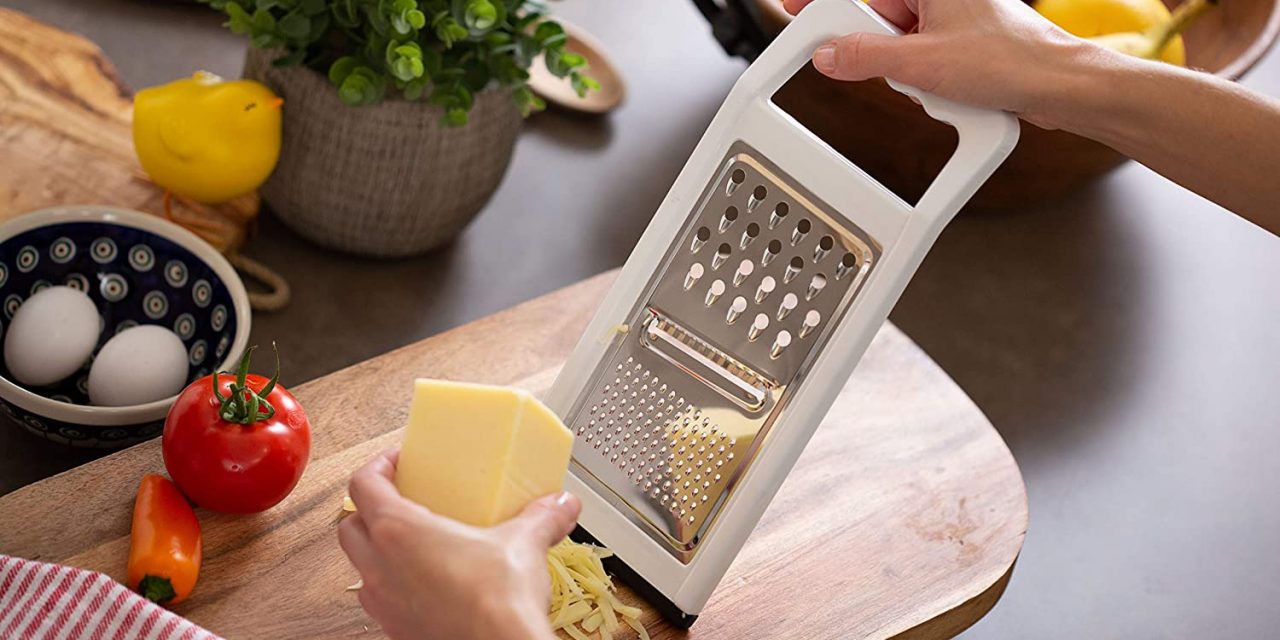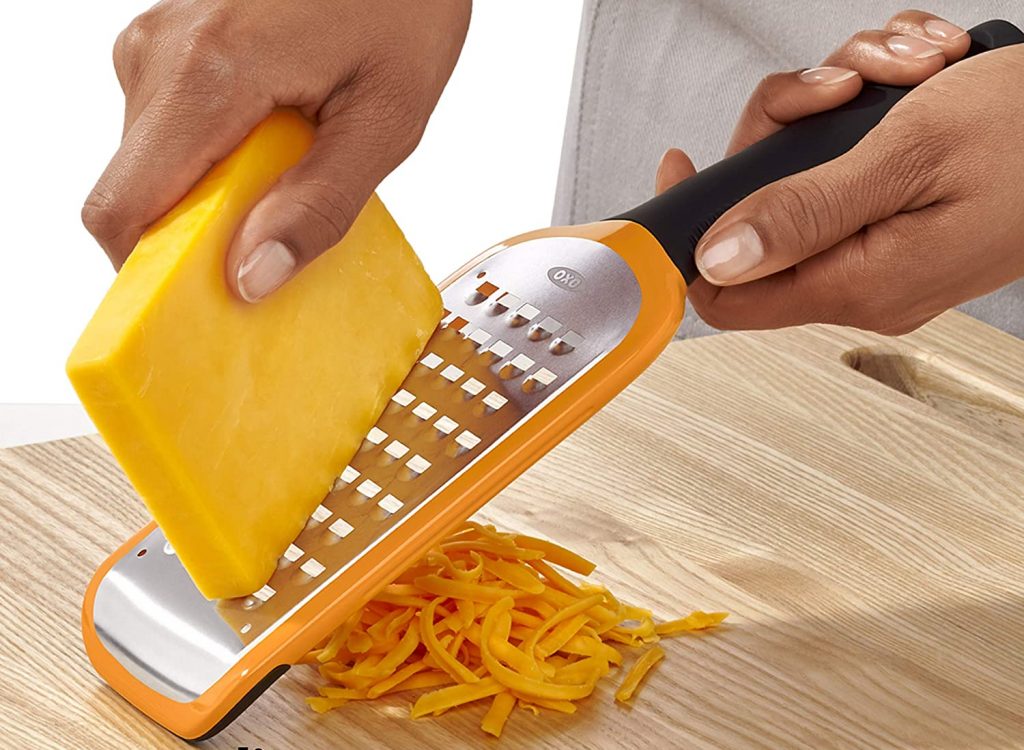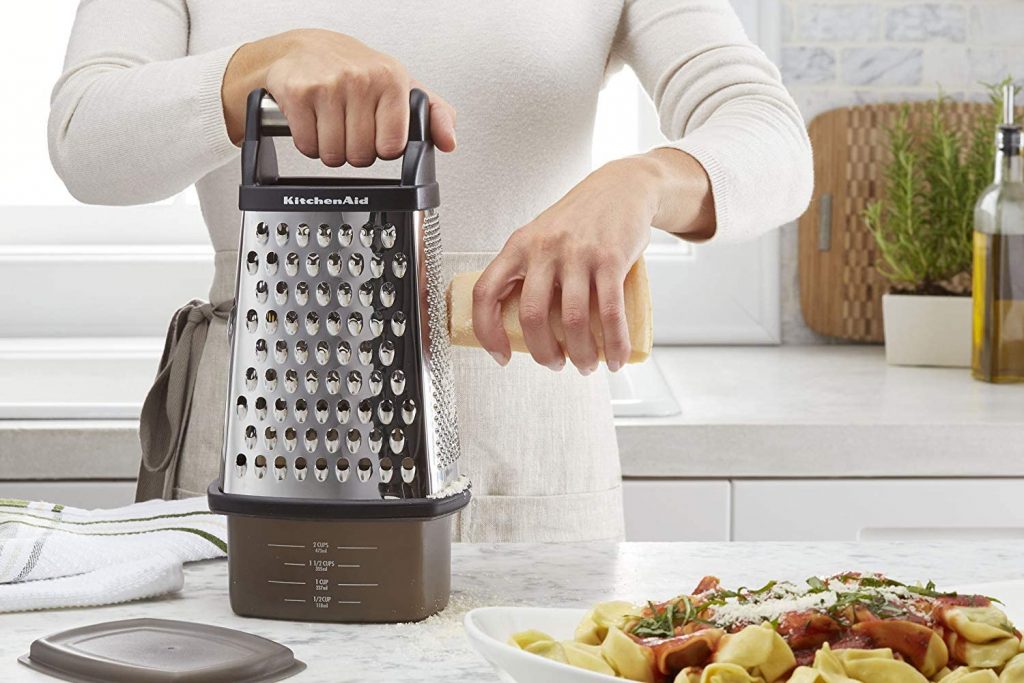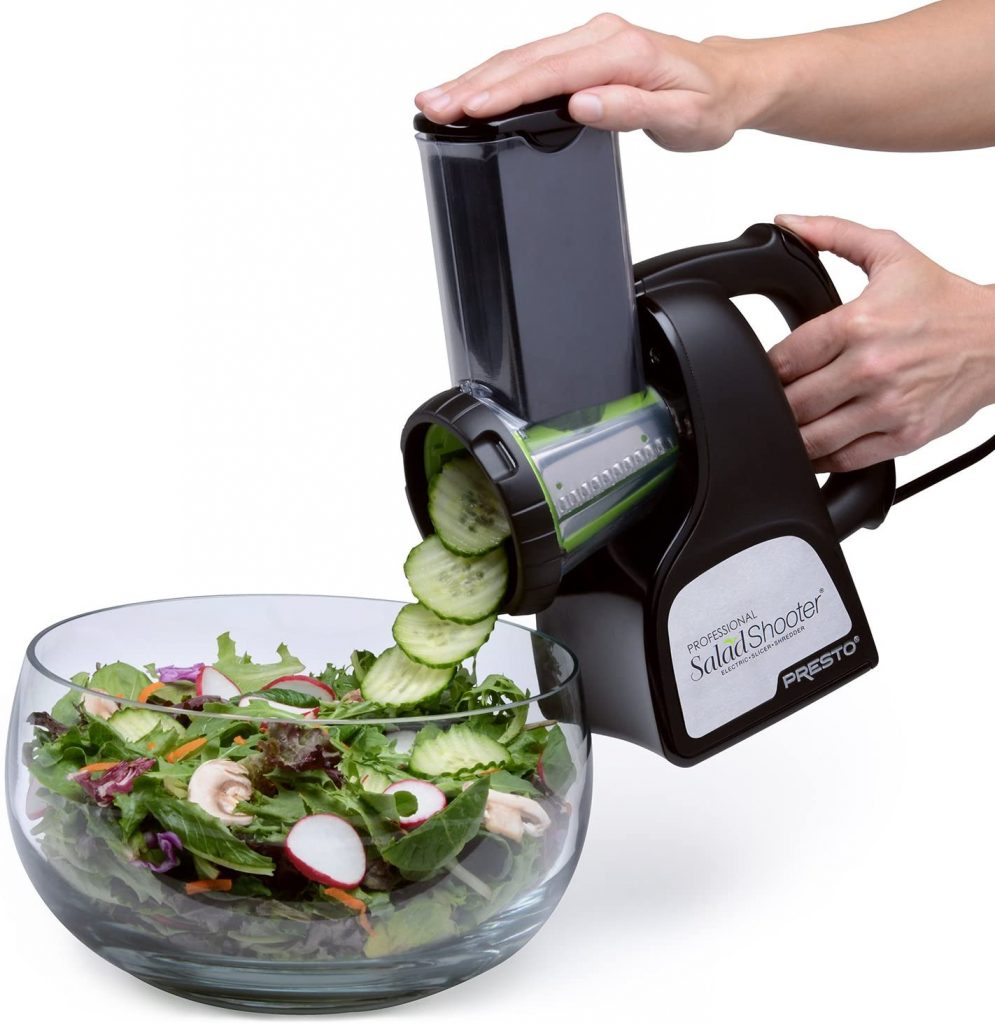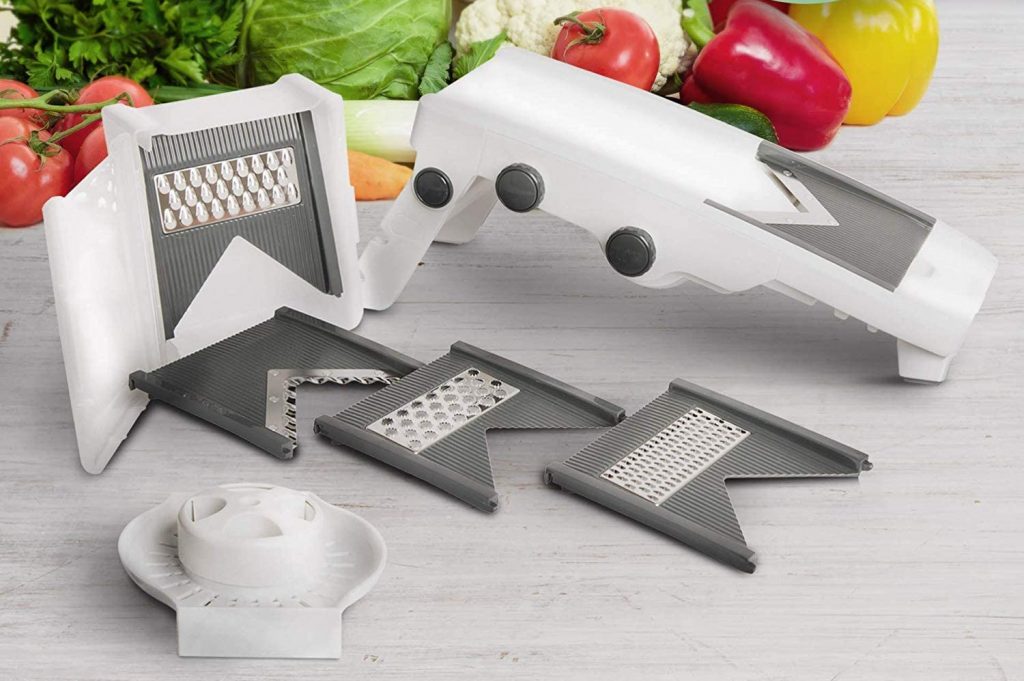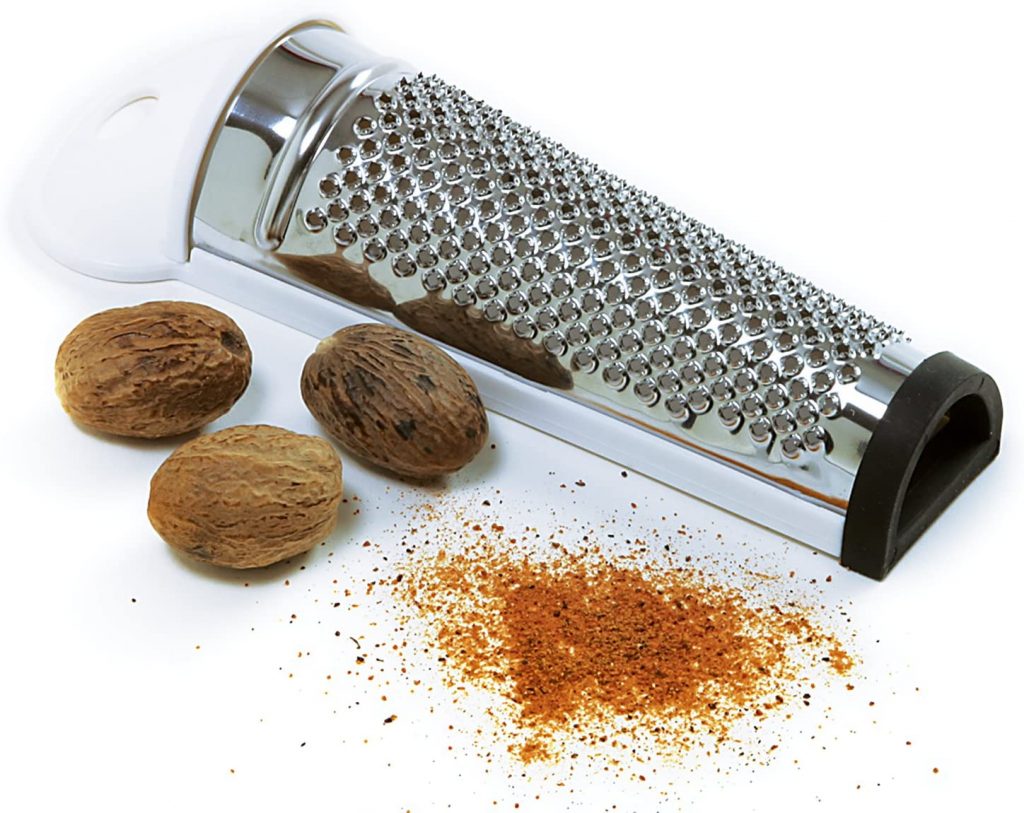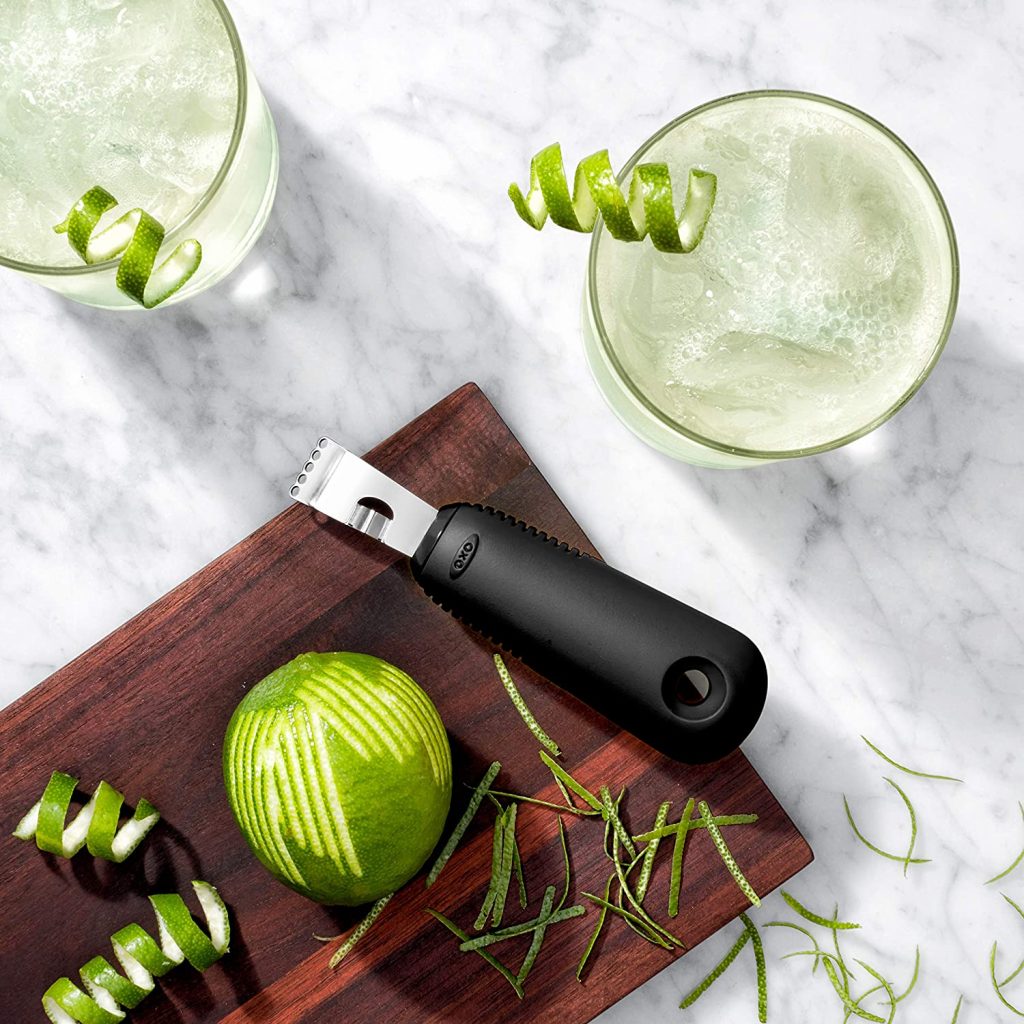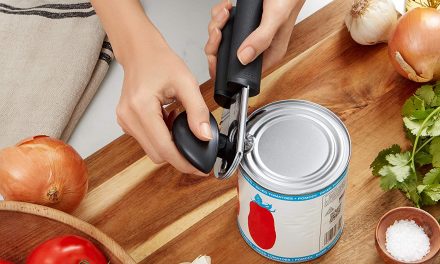Graters have been around since the 1540s. Sounds unbelievable, right? These handheld kitchen gadgets were initially invented to grate cheese, but they’ve come a long way since then.
Now, people make use of graters for a variety of things. For instance, you can utilize a grater to make lemon or orange zest. Vegans will be happy to learn graters work brilliantly to make cauliflower rice. And thanks to the various grating slots, graters are also ideal for shredding potatoes for hash browns and pancakes.
If you’re looking for a tool that’ll help you turn food items into fragmented, finer pieces – then you’ve come to the right place. In this article, we’ll focus on the different types of graters available on the market, their uses, and price brackets.
Types of Graters
Selecting a grater doesn’t involve rocket science. However, the sheer volume of options can be a little intimidating. That’s why, if you’re planning on adding a grater to your kitchen tools list, you should keep in mind three factors: the type of grating you’ll be doing primarily, the product’s durability, and ease of storage.
What’s the difference between a zester and a grater?
Zesters and graters may look alike and even function the same way, but they’re different in the types of slots/holes they have. A grater is perfect for producing fine strips or strings of food items like cheese because of its extensive and deep-cut holes. Conversely, a zester will give you much finer shreddings because of smaller and shallower slots.
Handheld Grater
As the name suggests, handheld graters are designed to be held in your hand as you grate (either horizontally or vertically) over a dish or vessel.
These graters are available in a stunning variety of grater slot types, but unlike box graters, a handheld grater will feature only one grating slot style. Hand graters are generally made of stainless steel, so they’re highly durable. They’re also equipped with a sturdy grip handle for better control, and they’re compact and easy to store.
Best For: Grating cheese, chocolate, ginger, coconut, and citrus fruits.
Pros
- Hand graters are simple to use and offer extended control. Their streamlined structure makes them easy to store.
- Stainless steel blades offer precise cuts, are rust-resistant, and easy to clean.
Cons
- Not very varied in terms of multiple grate slot styles.
- May require users to exert more arm strength than box graters.
Price range: $6-$29
Box Grater
Box graters get their name from their box-like shape. Typically, box graters have four-walled construction, with different grate style slots on each side. You can rest these graters on a flat surface (such as countertops or cutting boards) for manual shredding ease. There’s also a secure handle to promote a firm grip and avoid cutting hazards.
Best for: Grating cheese, vegetables, fruits, and for making zest.
Pros
- Freestanding, sturdy base, and grip handle reduce the amount of effort required for shredding.
- Multi-purpose grating thanks to varied grate slot styles.
- Some box graters come equipped with a storage container meant to catch the shreddings in one place for a cleaner user experience.
Cons
- The four-sided design typically works better for hard or semi-hard food items that aren’t difficult to handle post-grating. For example, items like cheese can be a little difficult to scrape off the grater’s sides.
- Box graters don’t allow for horizontal grating and can be a little challenging to use with small-sized items like nutmegs, etc.
Price range: $7-$35
Electric Graters
Electric graters are ideal for users who don’t want to expend too much time or energy on the grating process. The automatic machine does all the heavy lifting. There are several types of electric graters available to the consumer, from food processors to rotary-type electric graters.
These graters are perfectly safe to use thanks to the (internal) placement of the blades. Another added advantage is electric graters come along with different styles of blades that can be replaced according to your needs.
Best for: All types of food items from cheese to hard spices.
Pros
- Can grate large quantities of items in a short amount of time without any manual effort.
- The safest form of graters as the machine does all the work.
- Can handle all types of food items, from soft to hard.
- Parts are durable and dishwasher safe.
Cons
- More expensive in most cases.
- Not ideal for users who require only a small amount of grating for their daily cooking routine.
- It may be redundant for buyers who already possess a food processor or mixer with grating/shredding attachments.
Price range: $27-$98
Rasp Graters
Rasp graters are a sleek and more streamlined version of hand graters and are typically utilized for fine grating. They’re somewhat similar to hand graters in construction (though rasp graters are longer in shape), with a firm grip, made of steel or wood, that’s attached to the blade with holes. Suitable for both vertical and horizontal grating, rasp graters are easy to work with, easy to maintain and clean, and mostly dishwasher safe.
Microplane is a renowned brand within this category—so renowned, in fact, that sometimes rasp graters are mistakenly called microplanes. In reality, Microplane manufacturers a number of different graters and kitchen gadgets.
Best for: Grating hard cheese (like Parmesan), whole spices, nuts, garlic, root vegetables, chocolate, etc.
Pros
- Easy to handle and operate thanks to durable and sleek construction. Are suitable for vertical and horizontal grating.
- A rigid stainless steel body makes for less manual effort, and a firm grip handle ensures a steady grasp.
Compact design saves storage space.
Cons
- May not be suitable for users who prefer a multi-purpose grater with varied grating slot types.
- Requires manual effort and may not be ideal for users who need to grate large quantities of items.
Price range: $6-$54
Rotary Graters
If you’re looking for a manual grater that’s entirely safe to use, like an electric grater, you might want to consider a rotary grater. These graters have a barrel-like body with stainless steel blades and a handle that allows you to spin the blades for grating. They’re available in handheld and freestanding variations.
Rotary graters need to be disassembled for cleaning, and a few brands on the market are dishwasher safe. However, not all rotary graters offer interchangeable blades, which means you don’t have the option of selecting different grating styles.
Best for: Hard cheeses, chocolates, and hard nuts.
Pros
- Rotary graters are easier to use than other types of graters due to their rotating blade construction and handgrip that controls the grating action.
- Incredibly safe to use thanks to the internal placement of grating blades.
- Most rotary graters have dishwasher-safe parts.
Cons
- May not offer multiple blade types for varied grating styles.
- Require disassembly for cleaning.
- Not suitable for extended grating/shredding needs.
Price range: $7-$37
Mandolines
A mandoline is much more than just a grater. This handy kitchen utensil can be utilized for slicing, shredding, and even cutting courgette ribbons. Mandolines include a sloping dock/platform and an attached steel blade that goes on top. The design allows users to control the thickness and style of cuts according to their needs. There’s also a fingerguard to keep your hands protected during grating or slicing.
Best for: Grating, slicing, shredding, or even ribboning hard cheeses, firm vegetables, and fruits.
Pros
- A diverse kitchen tool that can offer users the benefit of slicing, grating, and julienne slicing.
- Durable and non-toxic plastic body to ensure stability while working.
- Stainless steel blades for precise cuts.
- Some mandolines come equipped with a knob that helps adjust the thickness of cuts.
Cons
- A mandoline will require more storage space than hand grates or microplanes.
- Not safe to use without a finger or handguard.
Price range: $16-$85
Spice Graters
Spice graters are specifically designed to allow for hassle-free grating for whole spices, nuts, and herbs. These are available in several design variations; however, the most common style includes a curved stainless body with fine grating holes and a flat platform underneath to catch the fine spice granules.
Some spice graters resemble rasp graters (with a grating blade attached to a handle) and are sleek in construction. Note, however, that if you’re looking to grate spices like coriander or black pepper, it’s best to opt for a spice mill.
Best for: Whole spices, nuts, and herbs.
Pros
- Highly suitable for users who prefer using freshly ground spices instead of ready-made powders.
- Trim design and construction require less storage space.
- Durable and hard-wearing stainless steel construction.
- Dishwasher safe.
Cons
- Not ideal for buyers who require a grater that offers different grating styles.
- Not suitable for semi-soft items like cheese.
- Requires careful operation to avoid scrapes and cuts while grating.
Price range: $4-$33
Citrus Zesters
Citrus zesters are designed to effectively obtain zest from lemons, oranges, and other citrus fruits. Zesters have a small metal head that has sharp and shallow perforated holes. These ensure all the flavorful peel is grated while avoiding the white, pithy, bitter underskin. Generally, zesters are constructed like rasp graters; only they’re lither and more streamlined. You can use citrus zesters horizontally or vertically – depending on your preference.
Best for: Zesting citrus fruits, finely grating garlic, ginger, coconut, chocolate, etc.
Pros
- Food-safe stainless steel construction for finely shredded ingredients.
- Ergonomic firm grip handle to promote a stable hold.
- Easy removal of gratings.
- User-friendly operation and dishwasher-safe.
Cons
- Not much choice in terms of different types of grating slots.
- Not suitable for deep grating.
Price range:$4-$14
Grater Starter Kit
Feeling a little confused about which grater type is best suited to your needs and lifestyle? Allow us to narrow down the options for you.
- If you’re cooking for a big family or do a lot of entertaining, it’s best to opt for an electric grater, like Presto’s SaladShooter, to help you save on time and effort that can be better spent elsewhere.
- Looking to go vegan or cut carbs? In that case, mandolines are really helpful for making the switch to a veggie and fruit-friendly diet. For this, you can’t really beat Mueller Austria’s multi-blade mandoline.
- If you’re more of a baker or a pastry chef enthusiast, you can get by with a rasp grater (more specifically, a Microplane) for those yummy desserts you’ve got planned out. There’s a reason everyone loves Deiss Pro’s microplane.
- We recommend the rotary grater for a problem-free cheese grating routine for pasta-loving fans of Italian cuisine.

